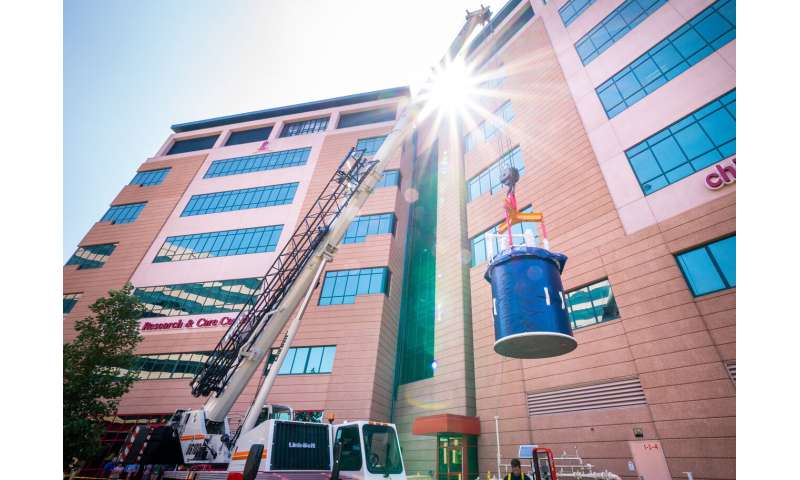World's largest and most powerful nuclear magnetic resonance spectrometer at St. Jude

St. Jude Children's Research Hospital has acquired the first Ascend 1.1 GHz Nuclear Magnetic Resonance Spectrometer, the largest and most powerful device of its kind from Massachusetts-based Bruker Corp.
The NMR will be used extensively by the Structural Biology Department at St. Jude using the most advanced technologies to tackle important biological systems with the goal to understand health and disease at the molecular and atomic level. It is the centerpiece of the department's expansion, which is being led by Charalampos "Babis" Kalodimos, Ph.D., department chair.
"This 1.1 GHz system provides unprecedented capabilities and opportunities for us to answer challenging biological questions," Kalodimos said. "It will be our most important tool to perform research in the area of dynamic molecular machines that are otherwise not amenable to other technologies."
With NMR technology, biological samples are placed inside the device's magnet, where they are bombarded with radio waves. This results in the emission of signals that are read by the spectrometer and translated into images, which provide a visual of how protein structures change and interact with other cellular molecules. Cells release signaling molecules that bind to receptors inside other cells that create changes.
Abnormal messages can result in the creation of abnormal proteins that don't respond to normal cell signals and can grow unchecked. That growth is what causes cancer.
In addition to the NMR, Kalodimos has overseen other technological upgrades and enhancements to the department, which utilizes four frontline techniques to examine biomolecular structures: cryogenic electron microscopy and tomography, NMR spectroscopy, X-ray crystallography and single molecule imaging. Structural biologists combine the results from the use of each technique to understand the structures of complex biomolecular systems.
James R. Downing, M.D., St. Jude president and CEO, said the addition of the NMR will significantly increase the technological infrastructure within the Structural Biology department.
"With the expansion of the Structural Biology Department, we are creating the world's most comprehensive research center for defining the structure of the molecular machines that carry out basic functions within cells," Downing said. "This information will enhance our ability to understand what drives pediatric cancer and other catastrophic diseases of childhood, and, ultimately, advance cures for these diseases."
Provided by St. Jude Children's Research Hospital